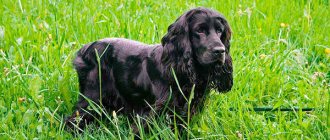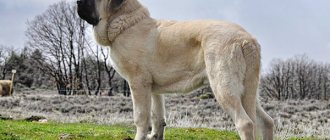- home
- Kinds
10/20/2018 When choosing a hamster for home keeping, the first thing you pay attention to is the color of the coat and its quality.
Then they are interested in the breed and living conditions of the animal. Some people like buffy, spotted, white or cream hamsters. But when a black hamster catches your eye, it is impossible not to notice it.
Black hamster - who is he?
A black hamster may have white paws and “socks”, but nothing else - no inclusions of a different color. This is a rare color that practically does not occur in nature, because the chances of two black representatives of the hamster species meeting are scanty.
The black hamster is not a breed or subspecies, but merely the result of a genetic code passed on from a female and a male with a black coat color.
It is possible to breed such a hamster at home, but it is extremely difficult. You need to get two different-sex representatives of the same black breed. Otherwise, even with a positive result, you can get non-viable offspring or kill the female. Of the dwarf breeds, it is permissible to cross a Campbell and a Dzungarik hamster.
The highest probability of finding a black “coat” is among Dzungarian or Syrian breeds of hamsters.
Variety of colors of dzungaria
Among Djungarian hamsters, black animals are rare. More often you can find a rodent with a natural color: a brown back with a dark longitudinal stripe, a light belly and white paws. This color is most common among dzungarians.
There are also unusual colors of animals:
- “Tangerine” color with red fur and a stripe along the back, like a natural color.
- Hamsters have sapphire-colored gray-blue fur.
- White color (“pearl”) is the rarest in Djungarian hamsters. White hamsters do not have a stripe on their back.
Syrian
The hamster was brought to Europe from Syria, where it lives in large numbers in the vicinity of the city of Aleppo. Under natural conditions, this animal can be found in eastern Turkey, in the foothills of Georgia. In winter they sleep like most hamsters.
The standard length for a Syrian hamster is 13.5 cm. At home, it can grow up to 20 cm. A distinctive feature of the body structure is a short tail, which may not be immediately noticed. This is one of the largest species that is bred at home. This is a clean animal that can bring joy.
Nature has endowed the rodent with four-fingered front paws and five-fingered hind paws.
The traditional color of Syrian hamsters is golden. But there are also white, beige, and chocolate brown. The black Syrian hamster looks very elegant. The fur is pleasant, soft and thick. Animals of this breed turn out beautiful if one of the parents is black and the other is white. The game of contrasts suits this nimble representative of the hamster family very well. A black and white hamster is as rare as a pure black one.
Children love Syrian hamsters very much; the animals willingly make contact and quickly understand what is required of them.
On a note. A positive feature is that the animal rarely gets sick and is quite unpretentious to its living conditions. You need to make sure that he has conditions for outdoor games, fresh food and clean water.
Main diseases of Syrians and their prevention
Syrian hamsters very rarely get sick. To minimize the risk of disease, you need to buy them from a registered breeder and keep them properly. Regular checks with a veterinarian are sufficient prevention for them. And yet, Syrians can sometimes get sick.
Let us highlight the main signs of deteriorating health in a hamster. If you notice them, take your pet to the veterinarian for an examination. Home treatment is not the best option.
So, the signs you should pay attention to:
- lack of appetite, strong pickiness in choosing foods;
- increased secretion of saliva, wet fur from below the muzzle;
- digestive disorders: liquid, dry or hard feces;
- tearfulness or purulent discharge covering the eyelids;
- respiratory tract diseases: wheezing, wheezing;
- deterioration of the coat: hair loss, wounds, scratching;
- reluctance to be physically active
- trembling, convulsions, loss of coordination;
- unnatural formations on the hamster's body.
Dzungarian
Black dwarfs are cute tiny creatures weighing up to 50 grams and up to 10 cm long.
But this color is uncharacteristic for these little ones, although it can be found even in natural conditions in Kazakhstan, the steppes of Siberia and Khakassia. In nature, they are often gray-brown with a dark stripe along the entire length. Djungarians of different colors have been obtained in captivity.
Just like Syrians, they are easy to train to handle. Not aggressive, flexible, sensitive to loud sounds and sudden movements. Therefore, they must be treated with love. They do not hibernate in winter, remain active all year round, and prefer evening and night time for games.
On a note. Djungarians are often bought in pairs. Black Djungarian hamsters get along well with each other, and in the future you can get wonderful offspring from them. The kids will get this rare color.
What breeds of hamsters are black in color?
Although black fur is not common among small rodents, this color is found in the two most popular breeds of hamsters - Djungarian and Syrian. Therefore, the dream of buying a black rodent is easy to fulfill in most pet stores and hamster nurseries.
Djungarians live for about two years
Black Djungarian hamster
Djungarians are small hamsters, they are also classified as dwarf breeds. Their size does not exceed 10 centimeters, and their weight is 50 grams. The fur of the Djungarian animal is smooth, even, soft and short. Black hamsters of this breed have shiny eyes, round and protruding, which gives the rodent a toy appearance. Djungarians live from two to two and a half years, and with proper care and proper nutrition - 4 years.
The animal will lead an active life in its home all year round; it will not hibernate during the winter, being active in the evening and at night, so it is advisable to feed the dwarf in the evening. The basis of the Djungarian hamster's diet should be grain mixtures, supplemented with herbs, pieces of fruits, vegetables and berries.
Sometimes your pet needs to be given protein foods (chicken breast cooked without spices and salt, low-fat cottage cheese) so that the animal’s nutrition is balanced.
by Mikhail Konovalov 03/21/2020, 19:45 109 Views
When choosing a hamster as a pet, you need to pay special attention to the color of its coat and its condition. Some people want to have a pet with a light coat color, while others prefer dark colors.
Let's consider the features of such an unusual color as black. The black hamster is not very common, but it is impossible to pass by it; you can see such a rodent in the photo.
Black hamster - care and maintenance, or where to place the animal?
There are no distinctive features in keeping black animals. It is necessary to focus on the breed. For example, baby dwarfs can take a standard size cage. An aquarium is also suitable, but you need to take into account that it should not be higher than 40 cm with a length of 100 cm. Otherwise, air exchange will be disrupted, and there will be increased humidity and stuffiness in the baby’s home. Fresh herbs, pieces of fruit and vegetables will spoil very quickly. Considering that this is a dwarf breed, life processes pass quickly, the hamster can be poisoned.
On a note. When choosing a cage for a dungeon, you need to pay attention to the width between the rods. For a dwarf breed, they should be minimal, otherwise the hamster will run away.
The Syrian black animal also loves space and cleanliness. Therefore, the cage is purchased larger than average. It is possible that with good care and a balanced diet, the pet will quickly grow to 20 cm and will have nowhere to turn in a small home.
It is important to choose a place that is comfortable for the animal. It is necessary to find a “golden mean” in order to withstand the following conditions:
- do not place near heat sources, under fans, or on a windowsill;
- drafts have a detrimental effect on the animal;
- Direct sunlight should not enter the cage;
- the animal’s home should not be accessible to other pets (cats, dogs);
- The room temperature is maintained at a comfortable level (not lower than 20℃).
Pictures of black hamsters are pleasant to look at, but you need to take into account that the animal will make noise at night.
How to equip a cage or aquarium for animals? Sample list:
- they put up a house where they can hide;
- two feeders and a convenient automatic drinker will make care easier;
- for an active life the animal will need a wheel, driftwood, tunnels;
- the best bedding is made from sawdust; it will absorb odors and moisture.
The cage needs to be cleaned regularly: wash the feeders and drinking bowl, change the bedding, wipe the bars with a damp cloth and wash the tray.
On a note. To keep their teeth in excellent condition, hamsters need a mineral stone or put twigs of fruit trees in the cage from time to time.
Which hamster should I buy for my child?
Hamsters are popular among the population, especially children. There are many reasons for this - lack of pickiness in care, low cost of the pet, and most importantly, the rodent, along with its home, takes up little space in the apartment.
Hamsters are often bought for children
It is very important to choose the right animal; for this you need to know the difference between a Djungarian hamster and a Syrian one. The former are more temperamental and can bite, the latter are calmer
shaggy Syrian hamster (Angora) - a type of Syrian hamster
Explain to your child that a hamster needs to be looked after, no matter what breed you choose. Both representatives are suitable for keeping in an apartment. Djungarians need more space; it is better for them to purchase a large one-story cage. Syrians love to climb in tunnels and labyrinths; compact multi-story cages are suitable for them.
For dzhungariks, it is better to choose a cage with the smallest possible distance between the bars, this will prevent escape. Djungarians are very active hamsters and as soon as they have the opportunity to escape, they will certainly take advantage of it.
For both breeds, lifespan is primarily determined by living conditions. With good care and the absence of diseases, including tumors, to which rodents are most susceptible, life expectancy increases.
It is important to recognize hamster diseases in time:
- the hamster looks restless and itches constantly;
- not as active as before;
- the pet's eyes are watery, mucus is released from the nose;
- he bites, squeaks, shows aggression when you want to pick him up;
- in a certain area there is a tumor that becomes a source of illness and pain.
If you gave your child a Syrian or Djungarian, periodically examine the rodent, and at the slightest suspicion of disease, consult a veterinarian. To prevent your pet from having problems with teeth, make sure that there is always a chalk or mineral stone in the cage for grinding down teeth, as well as branches of fruit trees.
What to feed a black hamster?
There are general rules when feeding domestic hamsters, which must also be followed when feeding representatives with black coats:
The main diet of the animals consists of grain, legumes, nuts, and seeds of edible plants.
- The animals are offered pieces of fruits and vegetables as vitamin supplements; 10–20 grams per day will be enough.
- Vegetables should be washed well before giving to the animal to prevent infection.
- Fruits should not be very sour.
- Rodents should not be given oranges or other citrus fruits. Exotic fruits are not the best choice for rodents.
- You can safely include carrots, pumpkin, and apples in your daily menu. Pears must be hard.
- Protein food must be present in the hamster's diet. This can be lean boiled meat and fish without salt, or natural low-fat cottage cheese.
How to pamper your pet? He will be grateful for raisins and seedless grapes. He will like dried fruits dried in natural conditions, without the use of chemicals and sugar.
There are now enough special balanced foods for rodents in stores. If you have doubts about the correctness of the diet, you can use ready-made mixtures.
On a note. Food that is enjoyable for humans can be extremely dangerous for rodents. This applies to chocolate, candies and other sweets. Garlic and onions, sorrel and any food from the table with spices and salt are dangerous for the animal’s delicate stomach.
Content Features
Although many owners do not listen to this opinion, Djungarians should not be placed several times in one cage. However, as evidenced by the experience of keeping this species in captivity, it is best if there is only one animal in one cage.
Keeping a male and female together will result in offspring. If the animals are not further planted, their numbers will grow exponentially, and instinct will force the adults to eat their young. Usually this immediately causes understandable rejection among the owners, but here it should be understood that hamsters in their natural environment do not live in families, but in single individuals in each area, and captivity conditions cannot change this. Therefore, if a female hamster has offspring, they should be placed separately upon reaching a certain age (as soon as young hamsters are able to feed on their own).
It is also not recommended to keep two same-sex hamsters together: in this case, aggression towards each other is possible, both in females and males. In addition, living together in the same cage can cause stress in each of the inhabitants, and this will inevitably affect their owners as soon as they try to communicate with them.
It is best to feed Djungarian hamsters in captivity with special food.
It is worth noting that pet stores quite often sell animals of hybrid origin under the guise of a Djungarian hamster. Such individuals may have an unstable psyche and a tendency to various diseases, including diabetes. A conscientious breeder will always provide you with a pedigree upon request.
Now let’s look at materials about another, no less popular human companion animal.
How long does a black hamster live?
The lifespan of a black hamster depends on the breed and conditions of detention.
The average life expectancy in the wild is two years. It is capable of obtaining food for itself and reliably hiding in burrows; however, hamsters often become prey to predatory animals.
If an animal lives in captivity, it is provided with conditions for active pastime and is provided with high-quality food, and will live for 4 years.
On a note. To prolong the pet's life, it is protected from stress and its health is closely monitored.
Important Warnings
If your hamster squeaks or hisses, it means he is excited or scared. If this type of behavior occurs, the animal should be left alone.
It is worth protecting your pet from any items containing harmful impregnations, flavors and dyes. This is due to the habit of rodents to taste almost all surrounding objects.
You can only let your hamster go for a walk on the floor. Its natural habitat is plains. Animals often fall from vertical surfaces, which leads to injuries and fractures, so you should not leave your pet on a table or chair.
Peppermint treat
Ingredients:
- 1 medium overripe banana.
- 2 chicken eggs.
- 3 tbsp. spoons of honey.
- 3 tbsp. tablespoons of liquid coconut oil (can be replaced with sunflower oil in the same amount).
- 1/2 teaspoon mint flavoring.
- 1/2 teaspoon baking powder.
- A quarter cup of carob (roasted carob powder). A small amount of cocoa can be substituted, but this is not recommended for animals. Therefore, try to find an original product.
- Oat flour.
Cooking procedure.
1. Mash the banana in a bowl.
2. Beat eggs into the resulting mass, add honey, baking powder, cinnamon and coconut (sunflower) oil.
3. Add oatmeal to the mixture to form a firm but slightly moist dough.
4. Divide the resulting volume into 2 equal parts.
5. Pour 1/4 cup of carob powder into one half, and add the same amount of flour to the second half. A hard lump should form that does not stick to your hands.
6. Roll out 2 rectangles, 9-10 mm thick.
7. Place the layers of dough on top of each other and roll along the long side. Wrap the resulting sausage in plastic wrap and put it in the refrigerator overnight.
8. Preheat the oven to 180 degrees.
9. Cover a baking sheet with parchment paper.
10. Remove the film and cut into 3-3.5 cm rounds.
11. Place on a baking sheet. During cooking, portions of dough will not increase in volume, so you can place them close to each other.
12. Bake for 10-15 minutes.
If you want to please your pet with a crunchier treat, cut the rolls into thin slices (about 1 cm), and after cooking, additionally dry them in a warm oven or even in a non-stick frying pan.
The finished product is stored for a long time in a dry place. So, by baking peppermint rolls once, you can treat your four-legged pupil with them for a long time.
Bon appetit to your dog!
I like it I don't like it
Peppermint treat
Ingredients:
- 1 medium overripe banana.
- 2 chicken eggs.
- 3 tbsp. spoons of honey.
- 3 tbsp. tablespoons of liquid coconut oil (can be replaced with sunflower oil in the same amount).
- 1/2 teaspoon mint flavoring.
- 1/2 teaspoon baking powder.
- A quarter cup of carob (roasted carob powder). A small amount of cocoa can be substituted, but this is not recommended for animals. Therefore, try to find an original product.
- Oat flour.
Cooking procedure.
1. Mash the banana in a bowl.
2. Beat eggs into the resulting mass, add honey, baking powder, cinnamon and coconut (sunflower) oil.
3. Add oatmeal to the mixture to form a firm but slightly moist dough.
4. Divide the resulting volume into 2 equal parts.
5. Pour 1/4 cup of carob powder into one half, and add the same amount of flour to the second half. A hard lump should form that does not stick to your hands.
6. Roll out 2 rectangles, 9-10 mm thick.
7. Place the layers of dough on top of each other and roll along the long side. Wrap the resulting sausage in plastic wrap and put it in the refrigerator overnight.
8. Preheat the oven to 180 degrees.
9. Cover a baking sheet with parchment paper.
10. Remove the film and cut into 3-3.5 cm rounds.
11. Place on a baking sheet. During cooking, portions of dough will not increase in volume, so you can place them close to each other.
12. Bake for 10-15 minutes.
If you want to please your pet with a crunchier treat, cut the rolls into thin slices (about 1 cm), and after cooking, additionally dry them in a warm oven or even in a non-stick frying pan.
The finished product is stored for a long time in a dry place. So, by baking peppermint rolls once, you can treat your four-legged pupil with them for a long time.
Bon appetit to your dog!
I like it I don't like it
Among which species are black hamsters most common?
So, if you are eager to have a tiny black fluffy miracle, then you are in luck - a similar coat color is found in the most popular and widespread breeds, the Syrian and Djungarian hamster. Therefore, acquiring them will most likely not be difficult. Although it should be noted that this color is quite rare.
The Syrian hamster is a medium-sized rodent, the Djungarian hamster is a dwarf one, which means they will need housing of different sizes. There will also be a difference in the amount of food eaten daily.
We invite you to get to know the black fluffies better.
Syrian hamster black
The Syrian, or Central Asian, rodent has the following parameters:
- weight - 100–130 g;
- body length - up to 14 cm;
- body - stocky, thick;
- muzzle - short, with large cheek pouches;
- ears are small, round, covered with hair;
- eyes - expressive, black, bead-like;
- tail - 1.5 cm long, almost invisible;
- limbs - stocky with wide paws, 4 toes on the front paws, 5 on the hind paws;
- Colors vary, the most common being golden.
Djungarian hamster black
Representatives of this breed have the following characteristics:
- weight - 35–65 g;
- body length - up to 10 cm;
- body type - round;
- ears - small;
- eyes - large, black;
- tail - short, almost invisible;
- limbs - covered with hair;
- color - different: white, black, brown, gray, with a dark vertical stripe on the back and a diamond on the muzzle;
- The coat is medium length, smooth, soft.











